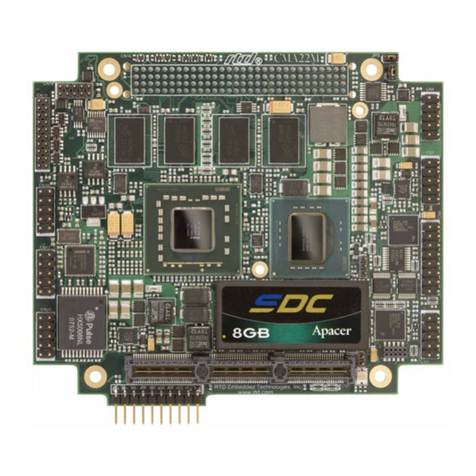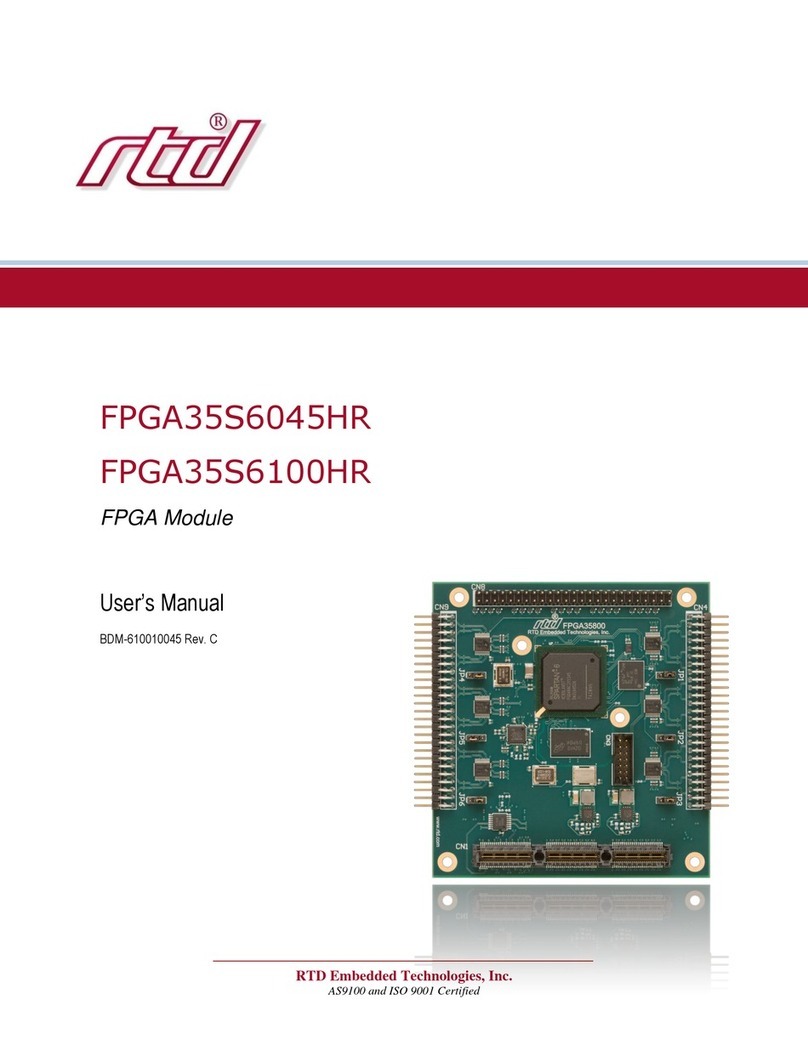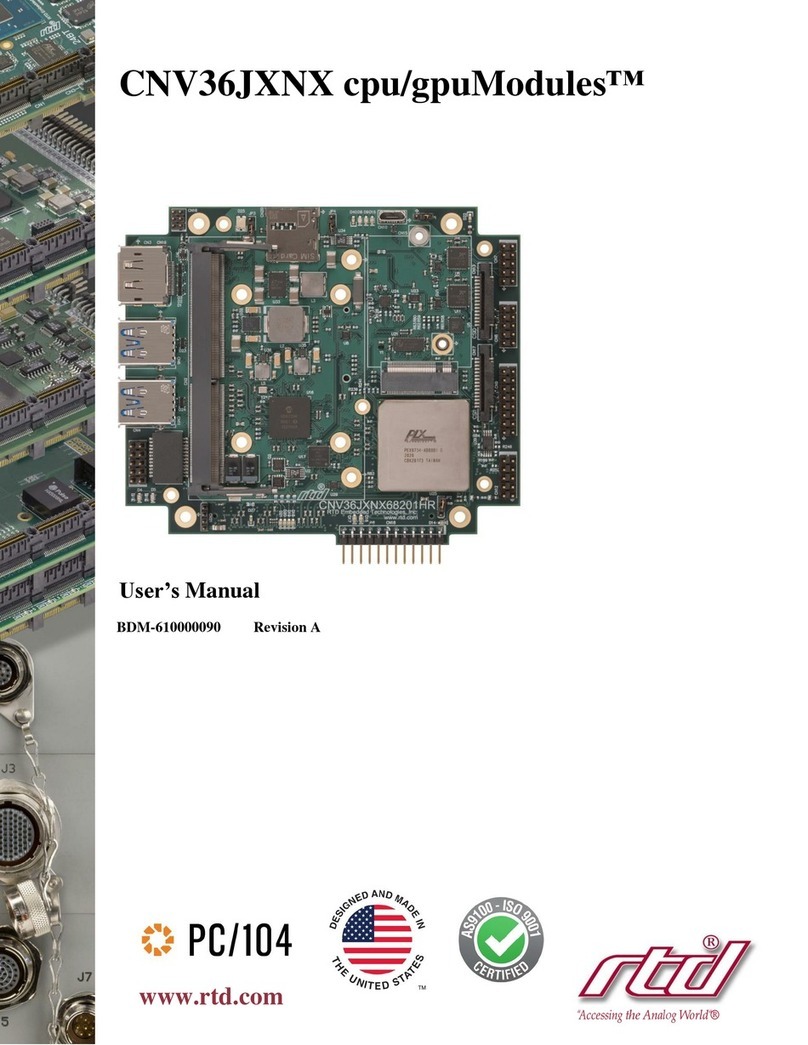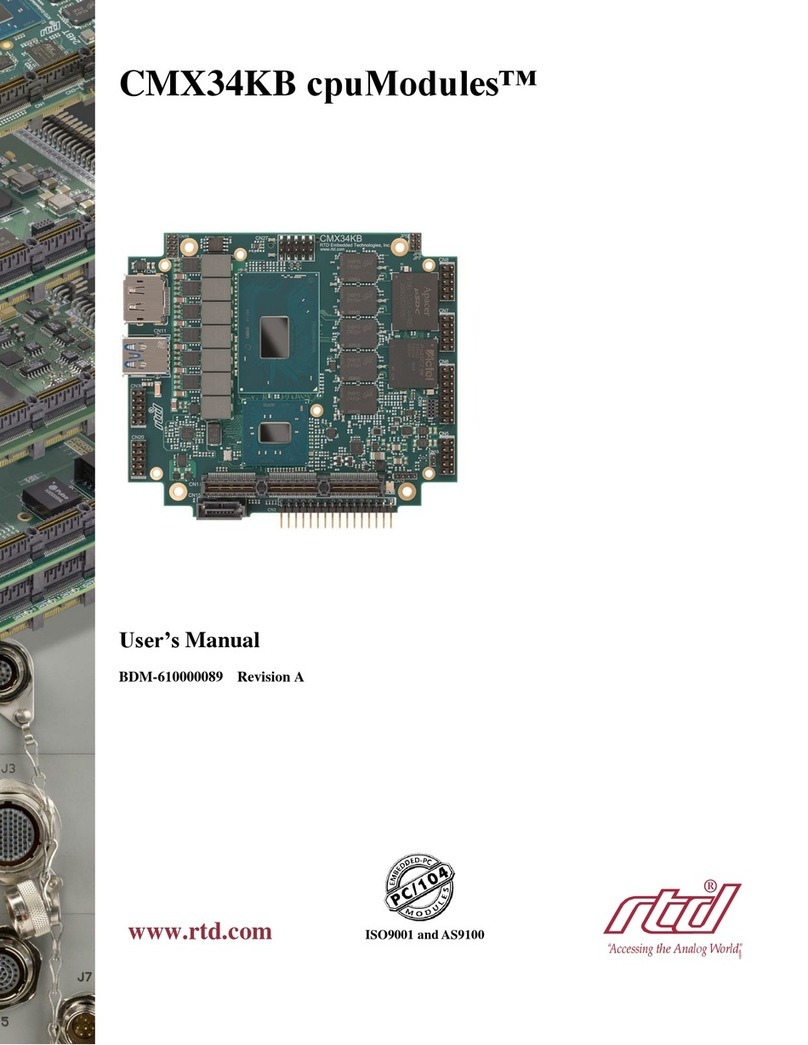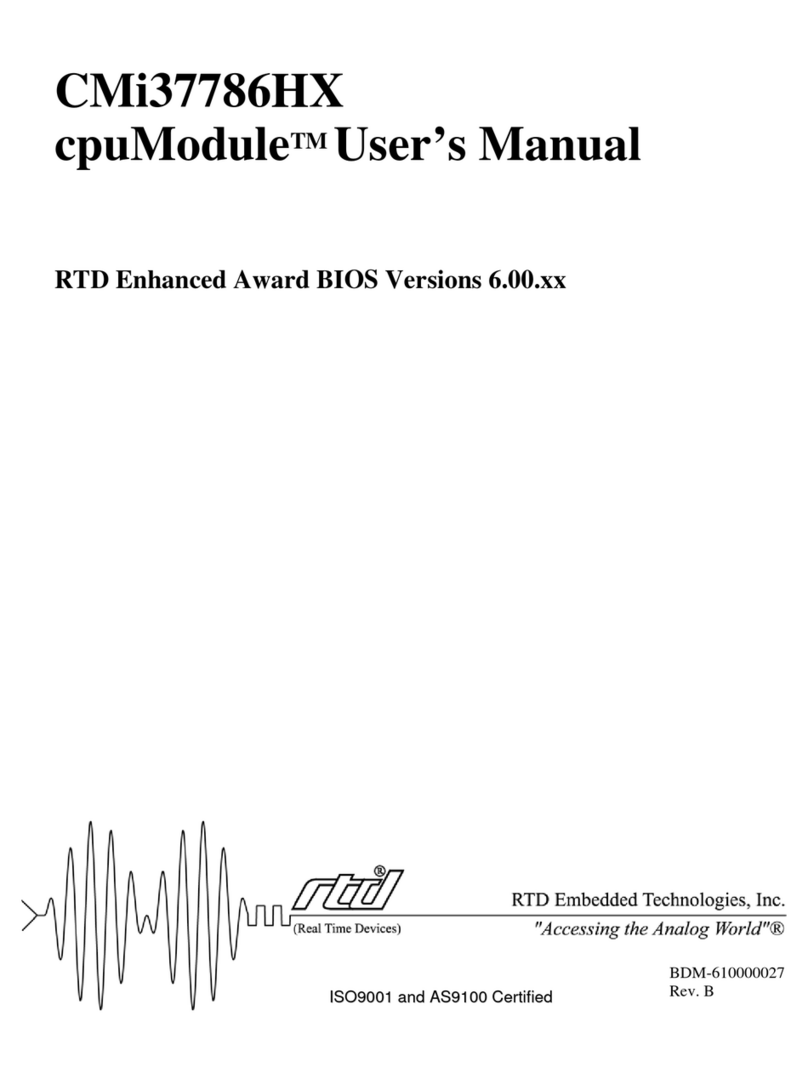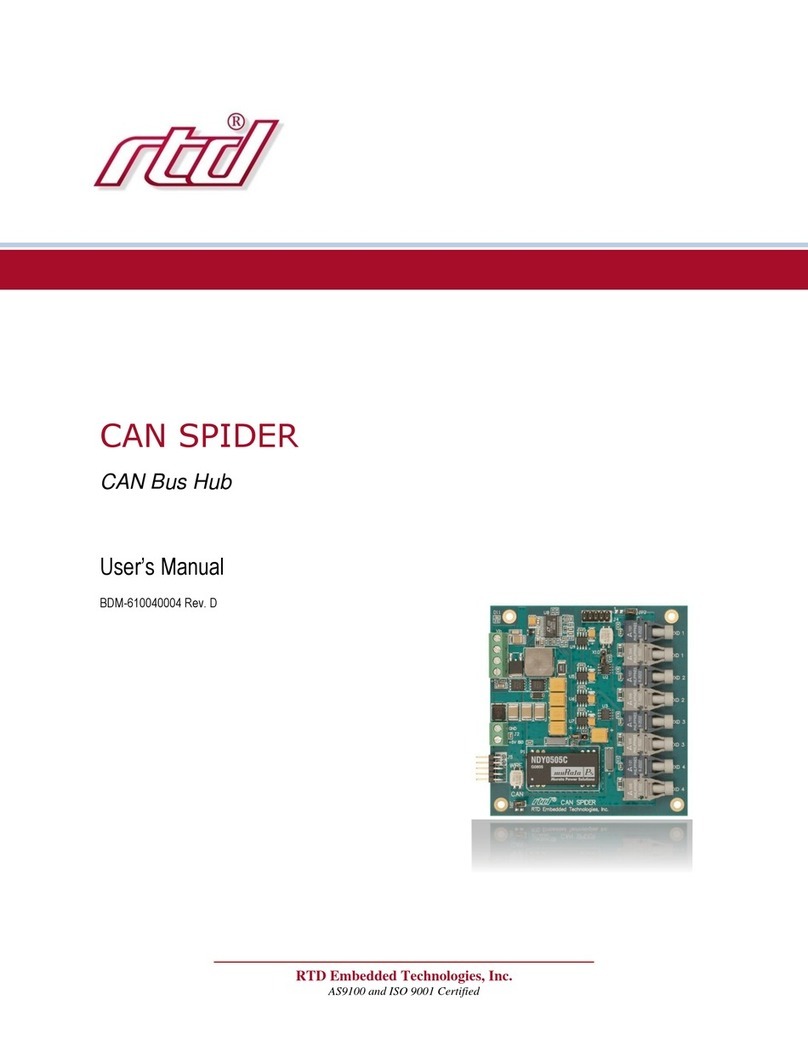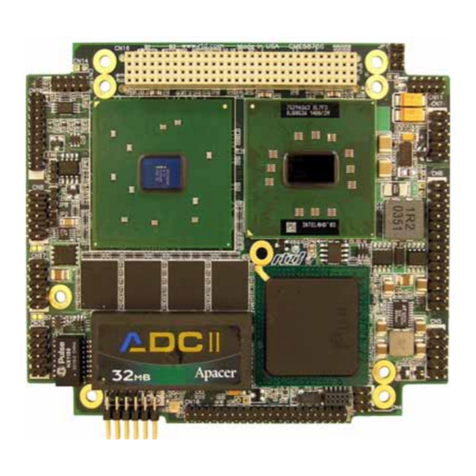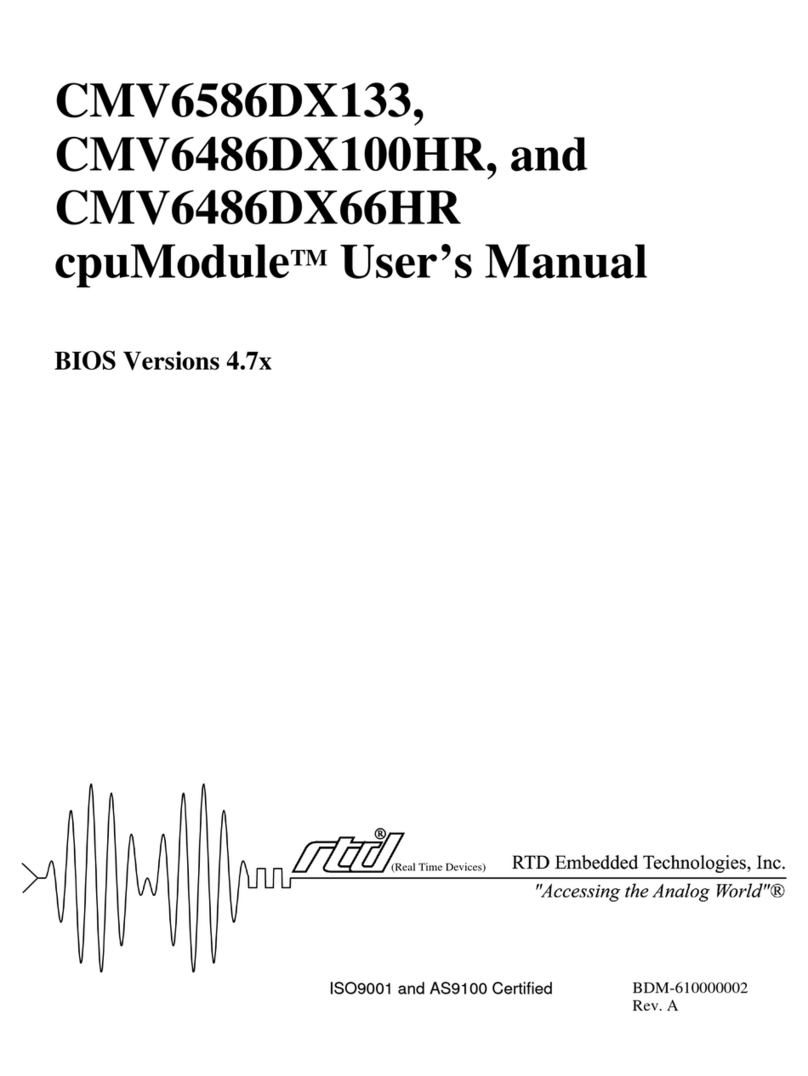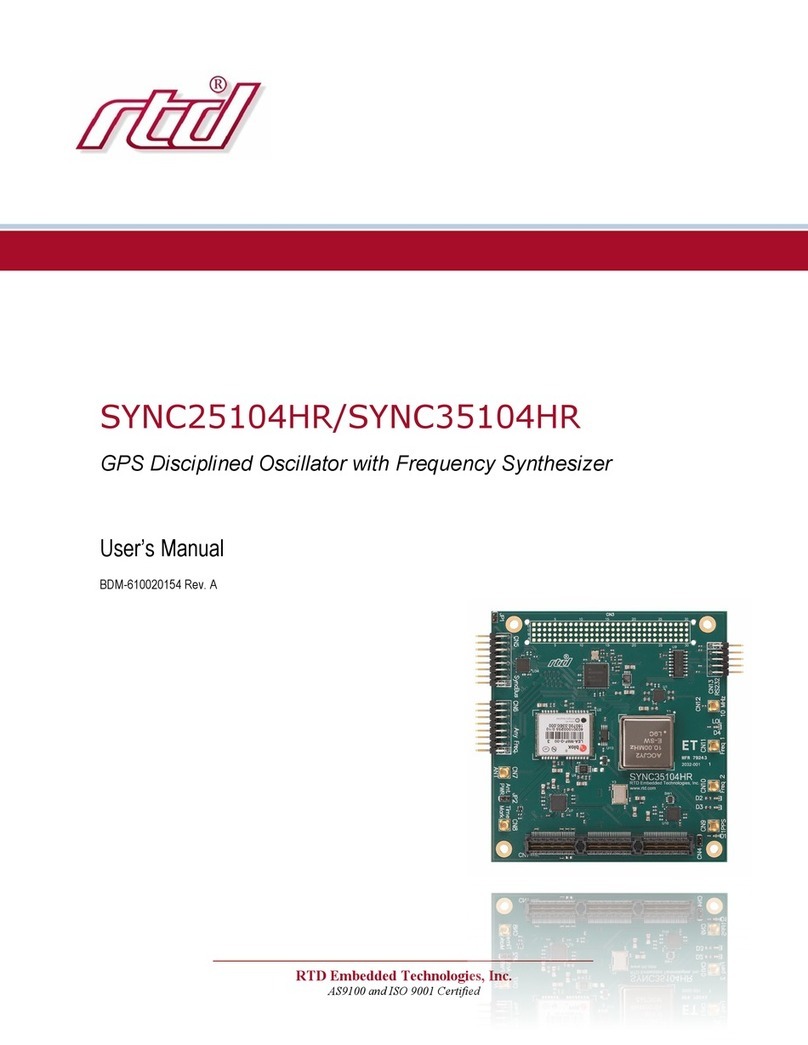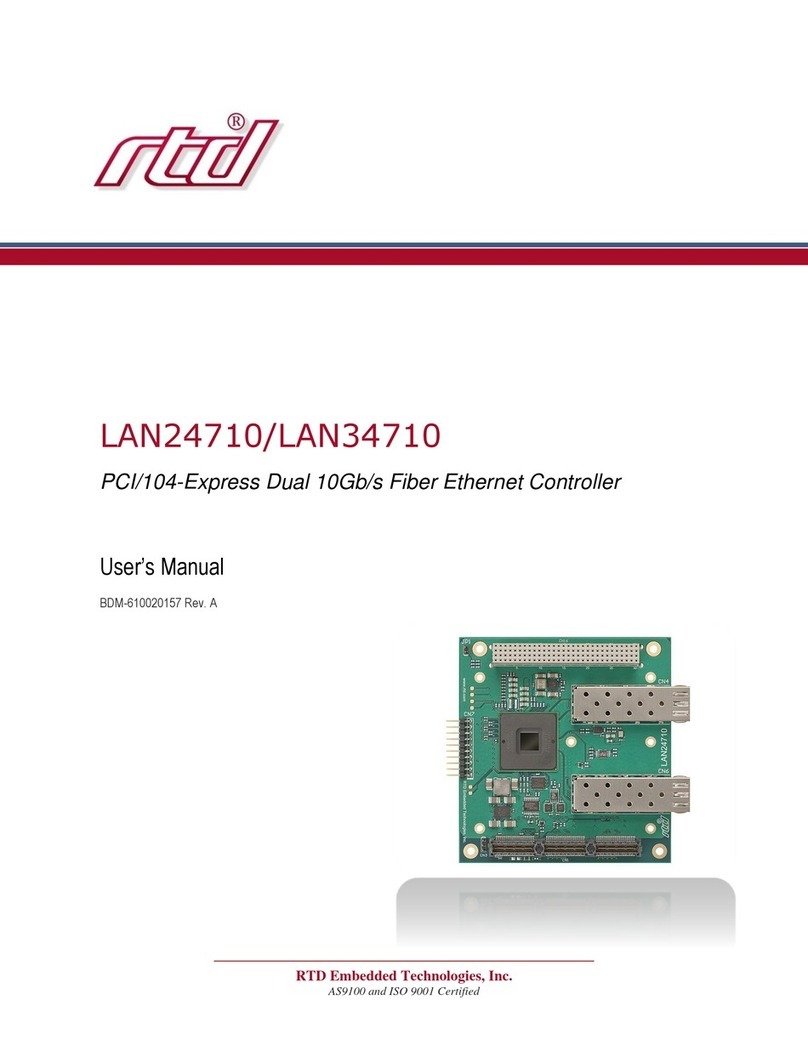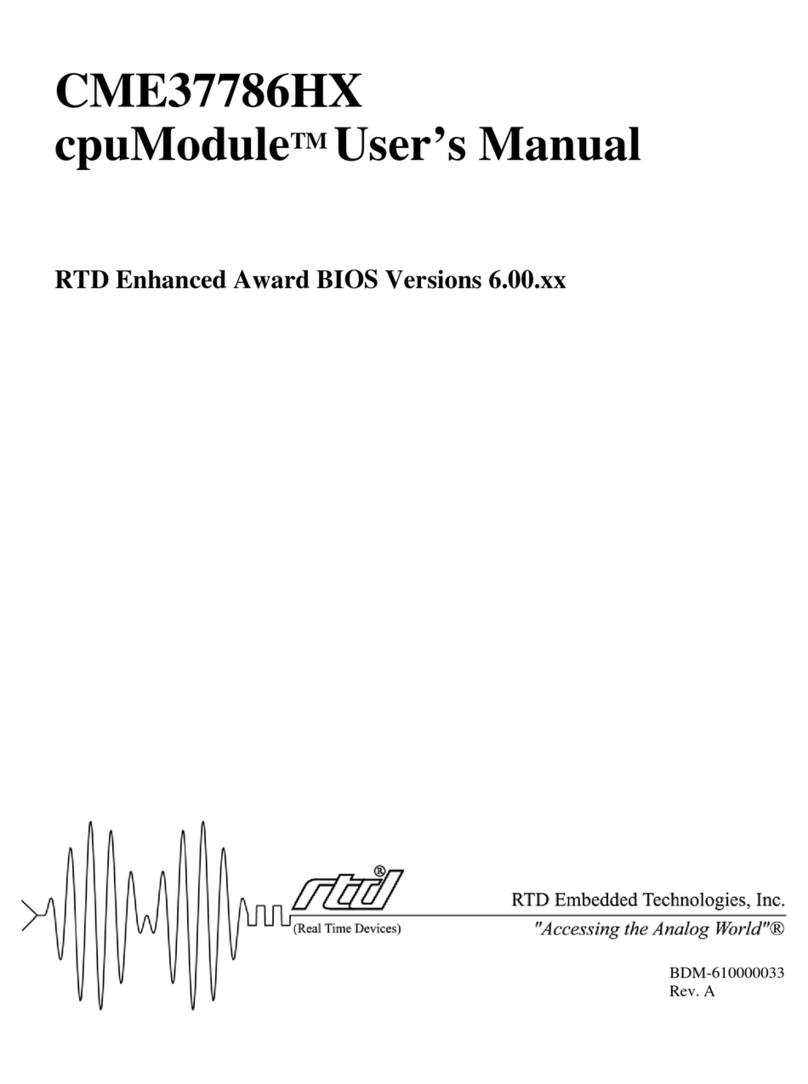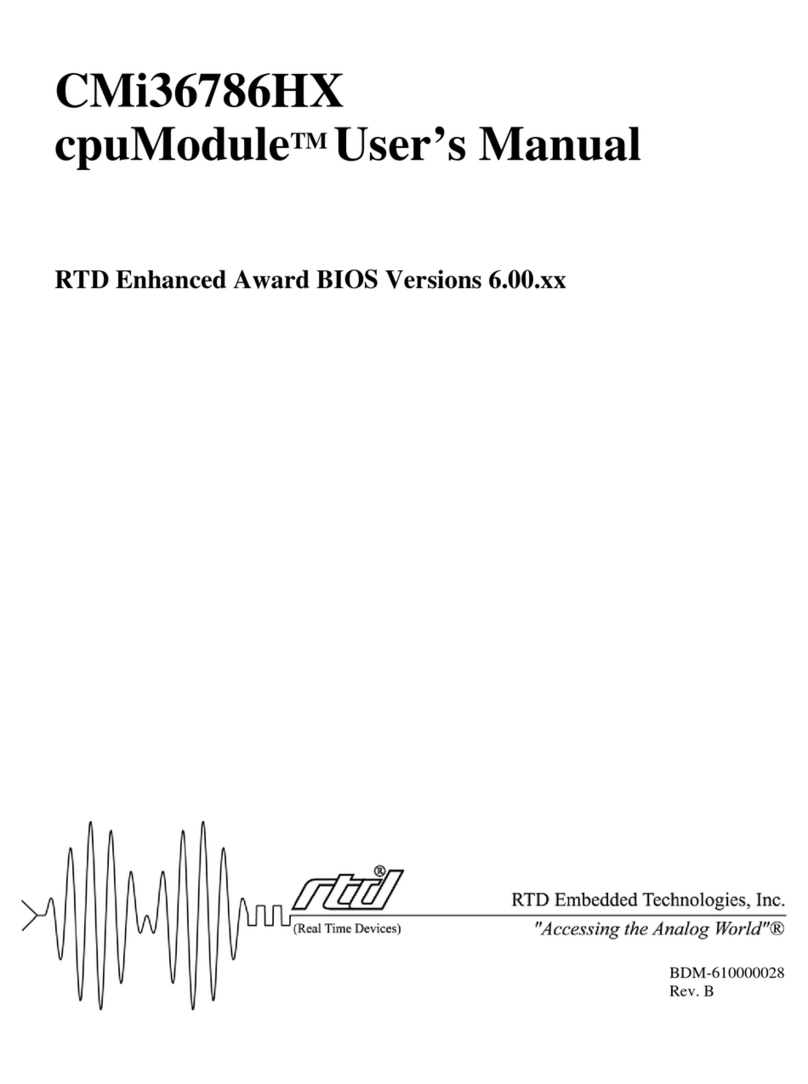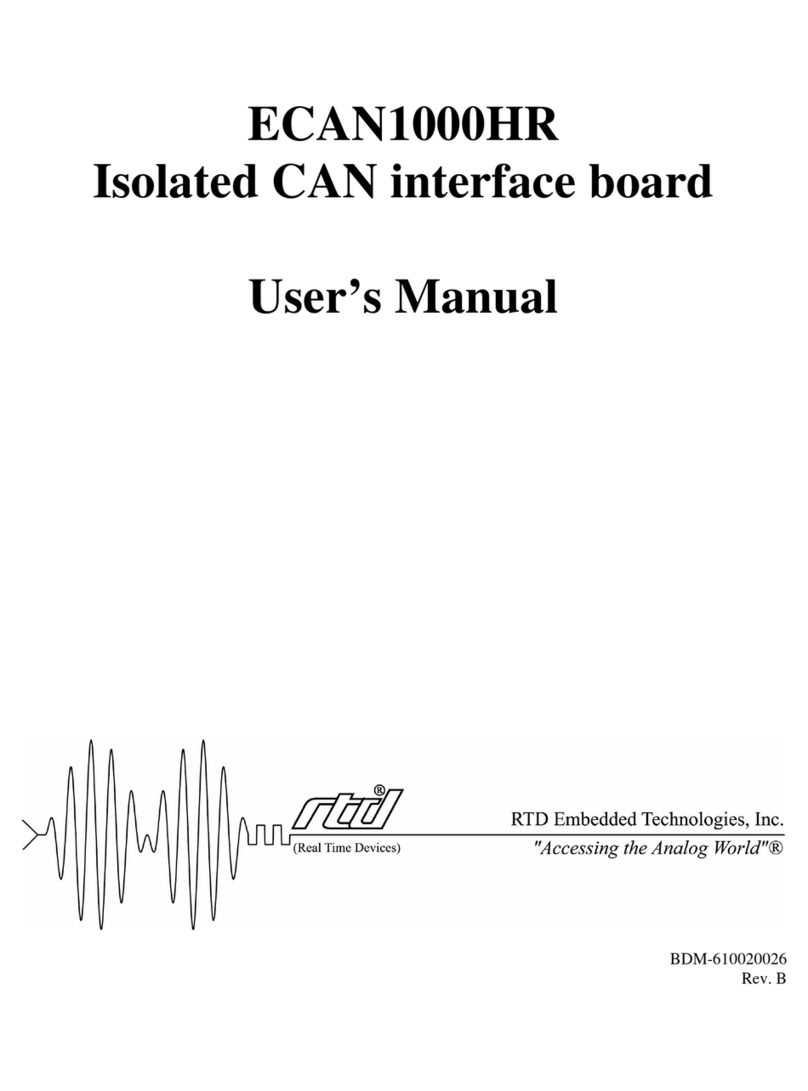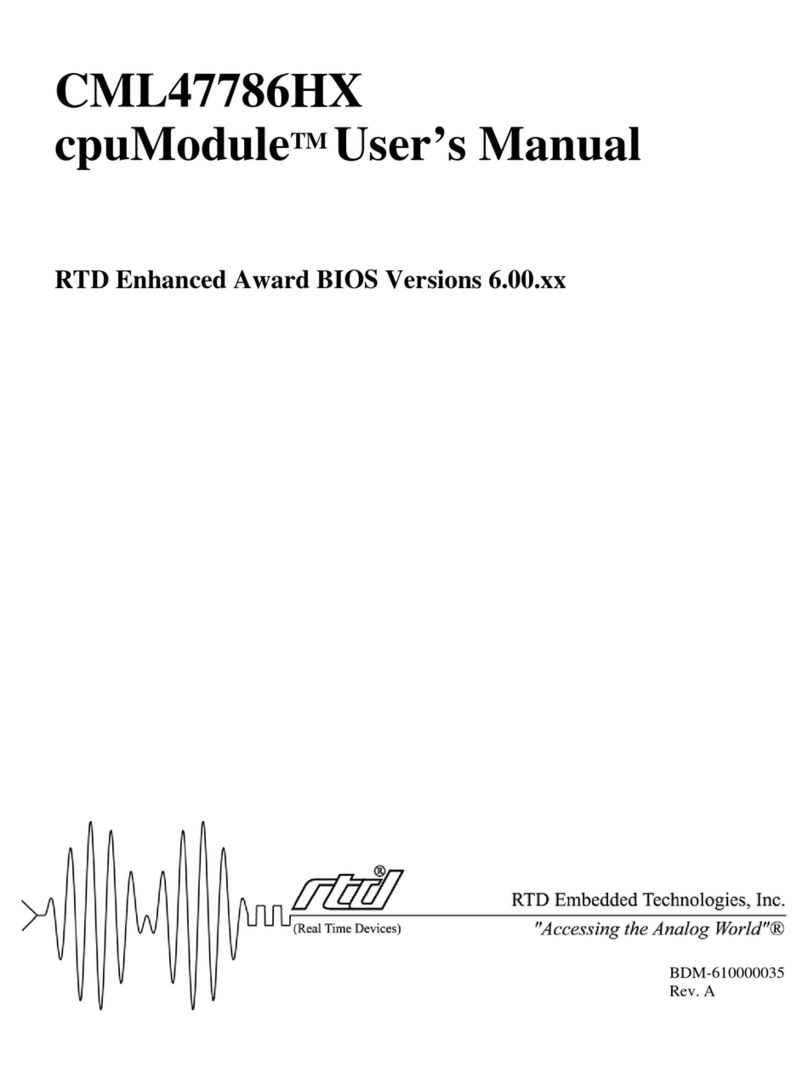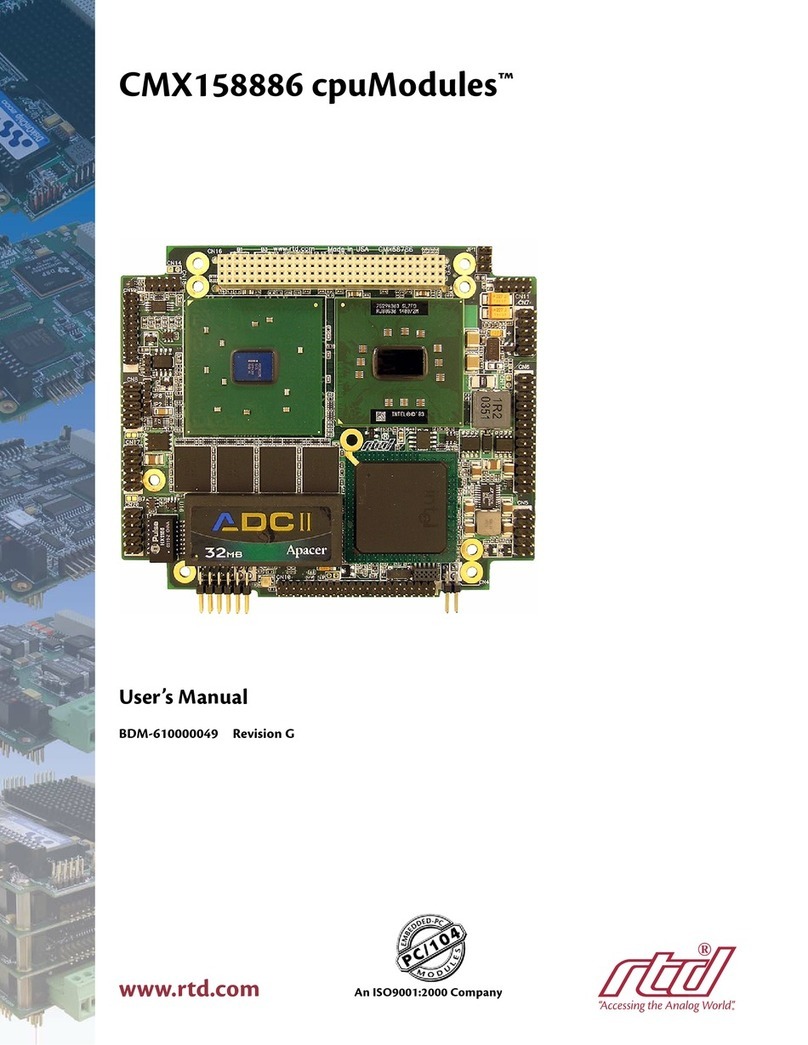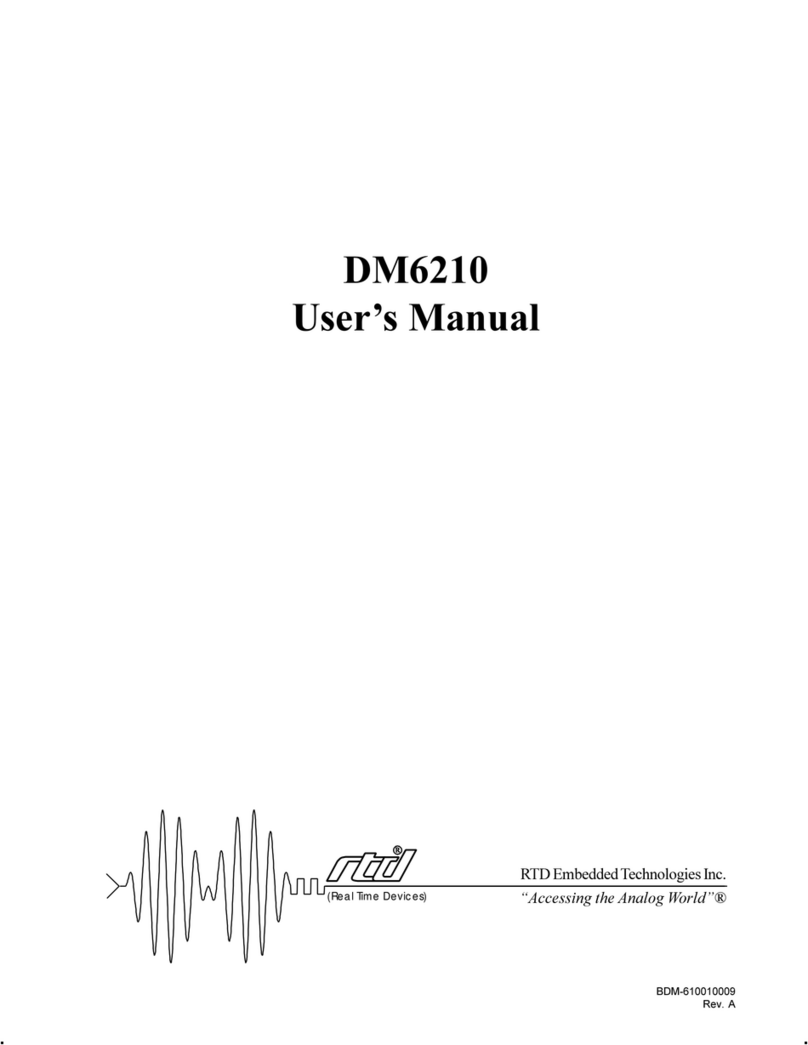
DM5816/DM6816 RTD Embedded Technologies, Inc.
5
BA + 0: Pulse Width Modulator 0.0 Duty Cycle (Write only)............................................................... 23
BA + 1: Pulse Width Modulator 0.1 Duty Cycle (Write only)............................................................... 23
BA + 2: Pulse Width Modulator 0.2 Duty Cycle (Write only)............................................................... 23
BA + 3: PWM Control and Digital Output Register (Write Only):........................................................ 23
BA + 4: Pulse Width Modulator 1.0 Duty Cycle (Write only)............................................................... 24
BA + 5: Pulse Width Modulator 1.1 Duty Cycle (Write only)............................................................... 24
BA + 6: Pulse Width Modulator 1.2 Duty Cycle (Write only)............................................................... 24
BA + 7: PWM Control and Digital Output Register (Write Only):........................................................ 24
BA + 8: Pulse Width Modulator 2.0 Duty Cycle (Write only)............................................................... 25
BA + 9: Pulse Width Modulator 2.1 Duty Cycle (Write only)............................................................... 25
BA + 10: Pulse Width Modulator 2.2 Duty Cycle (Write only)............................................................. 25
BA + 11: PWM Control and Digital Output Register (Write Only):...................................................... 25
BA + 12: 8254 Timer/Counter 0 (Read/Write)..................................................................................... 26
BA + 13: 8254 Timer/Counter 1 (Read/Write)..................................................................................... 26
BA + 14: 8254 Timer/Counter 2 (Read/Write)..................................................................................... 26
BA + 15: 8254 Timer/Counter Control Word (Write Only) .................................................................. 26
BA + 16: Clear IRQ/IRQ Enable (Read/Write).................................................................................... 26
BA + 17: IRQ Status (Read Only) ....................................................................................................... 27
BA + 18: Reserved.............................................................................................................................. 27
BA + 19: Reserved.............................................................................................................................. 27
Programming the DM5816....................................................................................................................... 27
Clearing and Setting Bits in a Port ........................................................................................................... 28
Chapter 5 – Digital I/O................................................................................................................................. 30
Chapter 6 – Timer/Counters........................................................................................................................ 31
Chapter 7 – Interrupts ................................................................................................................................. 33
P14: Jumper Selectable Interrupts ........................................................................................................... 33
Selecting the Interrupt Channel................................................................................................................ 33
Interrupt Sharing ...................................................................................................................................... 33
Basic Programming for Interrupt Handling .............................................................................................. 33

